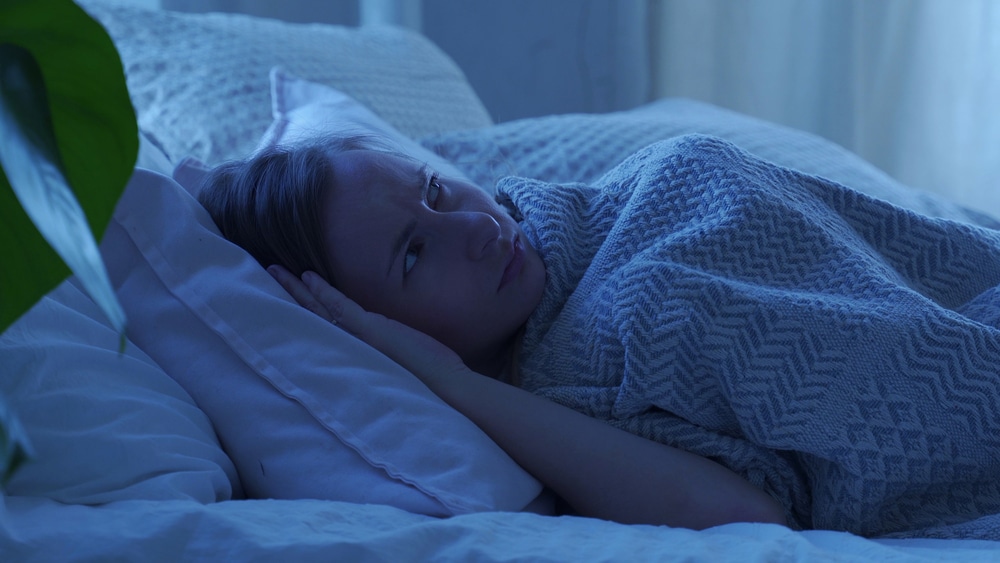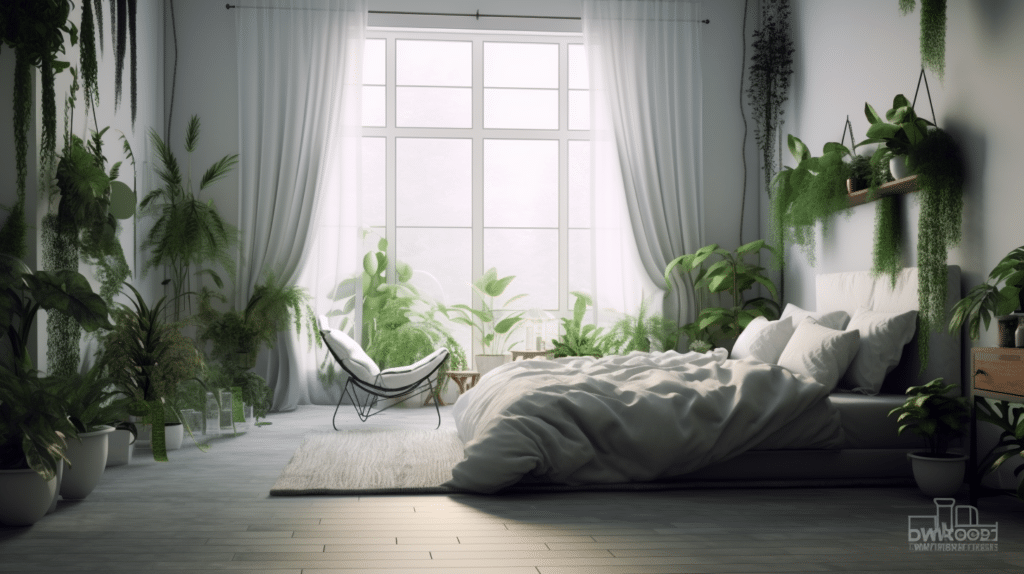Sleep is an essential physiological process that plays a crucial role in maintaining overall health and well-being. However, falling asleep can be challenging, especially in noisy environments. Noise pollution has become increasingly prevalent in today’s society, with various sources such as traffic, construction sites, or even household appliances disrupting the tranquility required for a restful night’s sleep. This article aims to explore effective strategies and techniques to help individuals fall asleep in noisy environments, taking into consideration the impact of noise on sleep quality and offering practical solutions to create a peaceful sleep environment.
Understanding the impact of noise on sleep quality is fundamental before delving into strategies for falling asleep in noisy environments. Research has consistently demonstrated that exposure to high levels of environmental noise during sleep can lead to disrupted sleep patterns and decreased sleep quality. This disruption can result in difficulties falling asleep initially or experiencing frequent awakenings throughout the night. Moreover, chronic exposure to noise during sleep has been associated with negative physical and mental health outcomes, including increased stress levels and impaired cognitive functioning. Therefore, finding effective ways to minimize the impact of noise becomes paramount for ensuring adequate restorative sleep.
Understanding the Impact of Noise on Sleep Quality
The investigation of noise’s effects on sleep quality is crucial in understanding how to effectively fall asleep in noisy environments. The impact of noise pollution on sleep has been extensively studied, and it has been found that excessive noise can disrupt the natural sleep patterns and lead to poor sleep quality. Noise disturbances during sleep can not only cause awakenings but also prevent individuals from entering deep stages of sleep, such as rapid eye movement (REM) sleep. This disruption can result in feelings of fatigue, daytime sleepiness, and impaired cognitive performance.
To combat noise disturbances and improve sleep quality in noisy environments, various strategies have been suggested. One effective approach is to create a quiet sleeping environment by reducing external noises through soundproofing techniques. This may involve using earplugs or white noise machines that emit soothing sounds to mask external noises. Additionally, implementing behavioral changes such as maintaining a consistent bedtime routine and practicing relaxation techniques before bed can help reduce the impact of noise on sleep quality. It is also important to address the source of the noise pollution itself, whether it be through community efforts or personal actions such as using soundproof curtains or double-paned windows to minimize external noises.
Understanding the impact of noise on sleep quality is essential for developing effective methods to fall asleep in noisy environments. By recognizing the negative consequences of excessive noise on our ability to obtain restful sleep, we can implement strategies such as soundproofing techniques and behavioral adjustments to mitigate these disturbances and improve overall sleep quality.

Creating a Peaceful Sleep Environment
Creating a tranquil sleep setting can significantly enhance the quality of rest in disruptive surroundings. One way to achieve this is by creating a calming bedtime routine. Establishing a consistent routine signals to the body that it’s time to wind down and prepares it for sleep. This can be achieved by engaging in relaxing activities such as reading a book, taking a warm bath, or practicing relaxation techniques like deep breathing or meditation. Avoiding stimulating activities close to bedtime, such as watching television or using electronic devices, is also important in creating a peaceful sleep environment.
Another crucial aspect of creating a sleep-friendly bedroom is optimizing the physical environment. Keeping the room cool, dark, and quiet can promote better sleep quality even in noisy environments. Using earplugs or white noise machines can help mask external sounds and create a more serene atmosphere. Additionally, investing in blackout curtains or eye masks can block out unwanted light sources that may disrupt sleep. It is also recommended to ensure that the mattress and pillows are comfortable and supportive, as physical discomfort can hinder falling asleep easily. Overall, by incorporating these strategies into one’s nightly routine and optimizing the bedroom environment for maximum tranquility, individuals can improve their ability to fall asleep in noisy surroundings and experience better overall restorative sleep.
Using White Noise or Sound Machines
Optimizing the sleep environment can be enhanced by utilizing white noise or sound machines. One of the benefits of using white noise is its effectiveness in helping babies fall asleep. White noise creates a consistent and soothing sound that masks other disruptive noises, creating a calming environment for infants. The gentle hum of white noise mimics the sounds heard in utero, providing a sense of familiarity and comfort for babies. It also helps drown out sudden noises that may startle them awake, allowing them to stay asleep for longer periods.
There are various types of white noise machines available on the market. Some machines produce natural sounds such as ocean waves, raindrops, or chirping birds, while others generate static-like sounds similar to those produced by fans or air conditioners. These different options allow individuals to choose the type of sound that best suits their preferences and promotes relaxation. Additionally, some white noise machines offer adjustable volume controls and timers, allowing users to customize their sleep environment according to their specific needs. Overall, incorporating white noise or sound machines into the sleep routine can significantly contribute to creating a peaceful atmosphere conducive to falling asleep in noisy environments.
Trying Earplugs or Noise-Canceling Headphones
An alternative approach to enhancing the sleep environment is by utilizing earplugs or noise-canceling headphones. These devices can help reduce or eliminate external noise, creating a more peaceful environment conducive to falling asleep. Earplugs are small inserts that fit into the ears and block out sound, while noise-canceling headphones use technology to counteract ambient noise. Both options provide a physical barrier between the sleeper and their noisy surroundings, allowing for a quieter and more restful sleep.
In addition to using earplugs or noise-canceling headphones, individuals seeking better sleep in noisy environments may also benefit from trying meditation techniques and exploring natural sleep aids. Meditation involves focusing one’s attention and eliminating distracting thoughts, which can be particularly helpful when attempting to fall asleep amidst background noise. Techniques such as deep breathing exercises or progressive muscle relaxation can promote relaxation and calmness, aiding in the transition from wakefulness to sleep. Furthermore, natural sleep aids such as herbal supplements like valerian root or chamomile tea have been used for centuries to induce drowsiness and improve sleep quality. These alternatives offer individuals additional options for creating an optimal sleep environment in noisy settings.
Implementing Relaxation Techniques
Implementing relaxation techniques can contribute to a more tranquil sleep environment, fostering a sense of calmness and aiding in the transition from wakefulness to slumber. One effective relaxation technique that can be utilized in noisy environments is deep breathing exercises. Deep breathing involves taking slow, deep breaths in through the nose and exhaling slowly through the mouth. This technique helps to activate the body’s relaxation response, reducing stress levels and promoting a state of relaxation conducive to falling asleep.
Another useful relaxation technique is guided imagery. Guided imagery involves using one’s imagination to create mental images that promote feelings of relaxation and tranquility. In the context of falling asleep in noisy environments, individuals can imagine themselves in a peaceful setting such as a beach or forest, focusing on the sights, sounds, and sensations associated with that place. Guided imagery helps divert attention away from external noise distractions and promotes a sense of calmness and serenity.
By incorporating deep breathing exercises and guided imagery into their bedtime routine, individuals can create an atmosphere of tranquility even in noisy environments. These techniques not only help reduce stress levels but also shift attention away from disruptive noises towards calming internal experiences. Ultimately, implementing these relaxation techniques can significantly improve sleep quality by creating an optimal environment for restful slumber even amidst noise disturbances.
Establishing a Consistent Sleep Routine
Establishing a consistent sleep routine involves following a regular pattern of activities leading up to bedtime, which can help regulate the body’s internal clock and promote better sleep quality. By going to bed and waking up at the same time every day, individuals can train their bodies to expect sleep at specific times, making it easier to fall asleep in noisy environments. Developing a bedtime routine is an essential part of establishing consistent sleep patterns. This routine may include activities such as taking a warm bath or shower, reading a book, or practicing relaxation techniques like deep breathing or meditation. Engaging in these calming activities before bed can signal to the body that it is time to wind down and prepare for sleep.
In addition to engaging in relaxing activities, it is important to create an environment conducive to sleep. This includes keeping the bedroom dark, quiet, and at a comfortable temperature. Blocking out noise from outside sources can be achieved by using earplugs or white noise machines. Creating a consistent pre-sleep ritual not only helps signal the body that it is time for rest but also provides individuals with a sense of control over their sleeping environment. This sense of control can be particularly beneficial in noisy environments where external factors may disrupt sleep. By incorporating regularity into one’s daily schedule and developing a calming bedtime routine, falling asleep in noisy environments becomes more manageable as the body becomes accustomed to this pattern of behavior.
Utilizing Sleep Masks or Eye Shades
Using sleep masks or eye shades can be an effective strategy for promoting better sleep quality and minimizing disturbances caused by external light sources. When choosing the right sleep mask, it is important to consider factors such as comfort, fit, and material. Opting for a mask that is made of soft and breathable fabric can enhance comfort levels and prevent any irritation on the skin. Additionally, adjustable straps or bands allow for a customized fit that ensures the mask stays securely in place throughout the night. By selecting a sleep mask that effectively blocks out light, individuals can create a dark sleeping environment conducive to falling asleep faster and staying asleep longer.
There are several benefits associated with using eye shades for better sleep. Firstly, eye shades provide a physical barrier to external light sources, allowing individuals to create their own personalized darkness regardless of their surroundings. This is particularly beneficial when trying to fall asleep in noisy environments where artificial lighting may be present. Furthermore, eye shades can help regulate melatonin production by preventing exposure to bright lights during nighttime hours. Melatonin is a hormone that plays a crucial role in regulating the sleep-wake cycle, and using eye shades can contribute to its natural production and promote more restful sleep patterns. Ultimately, incorporating sleep masks or eye shades into one’s bedtime routine can significantly improve overall sleep quality by reducing external stimuli and creating an optimal environment for relaxation and restfulness.
Reducing Noise Sources in Your Environment
To further enhance the sleep environment, individuals can consider reducing noise sources in their surroundings. One effective strategy is to rearrange furniture in a way that helps to create a barrier between the sleeper and the noisy area. For example, placing a bookshelf or desk against the wall facing the source of noise can help absorb and block some of the sound waves. Additionally, using noise-blocking curtains can be highly beneficial in reducing external noises from entering the room.
Noise-blocking curtains are specifically designed to minimize outside sounds by absorbing and dampening sound waves. These curtains are usually made with thick, heavy materials that have high-density fibers or multiple layers. When properly installed, they can significantly reduce noise levels by preventing sound waves from passing through windows or doors. This not only helps to create a quieter sleeping environment but also adds an element of privacy by blocking out both visual and auditory disturbances from outside sources. By incorporating these strategies of rearranging furniture and using noise-blocking curtains, individuals can effectively minimize noise disruptions and improve their ability to fall asleep even in noisy environments.
Incorporating Soothing Sounds or Music
By incorporating soothing sounds or music into the sleep environment, individuals can create a tranquil atmosphere that promotes relaxation and enhances the overall sleep experience. Exploring natural remedies such as nature sounds or white noise machines can help mask disruptive noises and create a calming ambiance. Nature sounds, such as rain falling or waves crashing, mimic soothing outdoor environments and can effectively drown out unwanted noise. White noise machines emit a consistent sound that masks other noises by creating a steady background hum. These devices are particularly useful in masking sudden or intermittent sounds that may disrupt sleep.
Finding the right volume level is crucial when using soothing sounds or music to aid sleep in noisy environments. The volume should be set at a level that is loud enough to mask disruptive noises but not too loud to cause discomfort or prevent relaxation. It is important to strike a balance between an audible sound and one that does not become intrusive or overly stimulating. Experimenting with different volume levels may be necessary until the optimal setting is found for individual preferences. Additionally, using headphones or earbuds can provide a more personalized listening experience by minimizing external distractions and allowing for better control over the sound intensity.
Incorporating soothing sounds or music into the sleep environment can significantly improve sleep quality in noisy surroundings. Exploring natural remedies like nature sounds or white noise machines, along with finding the right volume level, allows individuals to create an atmosphere conducive to relaxation and uninterrupted rest. By implementing these strategies, individuals can overcome the challenges of sleeping in noisy environments and achieve a peaceful night’s sleep.
Seeking Professional Help if Needed
Professional assistance should be considered if individuals are unable to find relief from the challenges of sleeping in disruptive surroundings. Seeking professional advice can provide valuable insights and guidance on how to overcome difficulties falling asleep in noisy environments. Sleep therapists or psychologists specializing in sleep disorders can offer personalized strategies and therapy options tailored to individual needs.
Sleep therapists may recommend cognitive-behavioral therapy for insomnia (CBT-I) as an effective treatment option. CBT-I focuses on addressing the underlying causes of sleep disturbances and helps individuals develop healthy sleep habits. This type of therapy involves identifying and challenging negative thoughts and beliefs about sleep, implementing relaxation techniques, and establishing a consistent sleep schedule. Additionally, professionals may suggest sound therapy, which uses soothing sounds or white noise machines to mask disruptive noises and promote better sleep quality.
Seeking professional help is essential for individuals struggling with falling asleep in noisy environments. These experts can provide valuable advice, recommend appropriate therapy options such as cognitive-behavioral therapy for insomnia (CBT-I), and guide individuals towards achieving restful nights despite disruptive surroundings.
Conclusion
In conclusion, falling asleep in noisy environments can be challenging, but there are several strategies that can help improve sleep quality. Understanding the impact of noise on sleep is essential, as it allows individuals to create a peaceful sleep environment by using techniques such as white noise or sound machines, earplugs or noise-canceling headphones, relaxation techniques, and sleep masks or eye shades. Additionally, reducing noise sources in the environment and incorporating soothing sounds or music can further enhance the ability to fall asleep. However, if these methods do not provide relief from noisy environments, seeking professional help may be necessary.
Overall, taking steps to minimize the effects of noise on sleep can lead to improved rest and overall well-being. By implementing these strategies and creating a calm sleeping environment free from disruptive sounds, individuals can increase their chances of falling asleep quickly and achieving a more restful night’s sleep. It is important for individuals to prioritize their sleep health and seek assistance if needed to ensure they are getting the quality rest they need for optimal functioning during waking hours.


